Money Animals!
I have to confess that I have not always been comfortable teaching probability. I’m fairly certain that I didn’t learn anything about it in high school (NYS Regents mathematics way back in the day BEFORE Sequential I, II and III), and I never took a course which included it in college. My knowledge is self-acquired and taught – through preparing for certification exams, Praxis exams, and teaching. In the 5 years I’ve been teaching the topic, I’ve worked and reworked my lessons in Algebra 2 to bring my own understanding to a conceptual level which is deep enough to communicate to my students, and have relished the loving addiction to Pascal’s Triangle I have thus created in many of them.
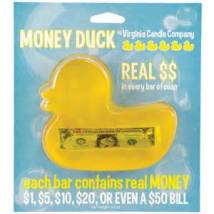 This term in Discrete Math, I took the plunge and taught a unit (using lessons generously shared with me by a colleague at school) based on games of chance – dice, spinners, flipped quarters, etc. After two weeks of playing and analyzing games, we spent several days learning about Expected Value, relatively simple to calculate (in our examples) but tricky to understand. Once I was convinced that the students knew how to approach an expected value problem, we worked through the famous Money Duck lesson, developed by Dan Meyer.
This term in Discrete Math, I took the plunge and taught a unit (using lessons generously shared with me by a colleague at school) based on games of chance – dice, spinners, flipped quarters, etc. After two weeks of playing and analyzing games, we spent several days learning about Expected Value, relatively simple to calculate (in our examples) but tricky to understand. Once I was convinced that the students knew how to approach an expected value problem, we worked through the famous Money Duck lesson, developed by Dan Meyer.
Attendance is an issue in my Discrete Math classes, so over the course of the lesson and the task that followed (a total of three and half days), I replayed the video for students who  were either absent physically or perhaps mentally. I never anticipated how much 16 year old students would enjoy watching Dan Meyer wash his hands repeatedly. The class came to a standstill every time I turned it on. This enthusiasm for the video carried over to their analysis of the probability distributions.
were either absent physically or perhaps mentally. I never anticipated how much 16 year old students would enjoy watching Dan Meyer wash his hands repeatedly. The class came to a standstill every time I turned it on. This enthusiasm for the video carried over to their analysis of the probability distributions.
My colleague designed an extension for the lesson, similar to Dan Anderson’s activity. The students designed their own “Money Animals”, complete with a price, distribution, 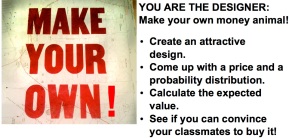 and an expected value. This was all done on one sheet; the design, price and distribution were visible to all, while the calculations were on the back. After everyone had finished, we had our Money Animal Bonanza.
and an expected value. This was all done on one sheet; the design, price and distribution were visible to all, while the calculations were on the back. After everyone had finished, we had our Money Animal Bonanza.
https://www.scribd.com/document/329693192/Money-Animal-Hand-Out
The students were allowed to purchase two Money Animals, based on the desirability of the product itself and its distribution.
At first, just a few students wandered over to the Money Animal Mart. I was impressed with how thoughtfully these early shoppers examined their options. And then EVERYONE rushed the board, eager to debate the pros and cons of design and potential gain. The results were interesting, and in some ways predictable.
(1) There’s an artist in every class, waiting to draw a gorilla. 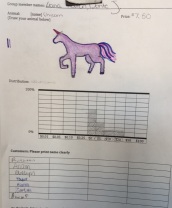
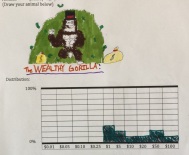
(2) Everyone loves unicorns.
(3) Marketing is everything, and frequently outweighs sensible decision-making.
The clock ran out, and I announced the ‘sales’ results and the concomitant expected values. The potential earnings on the BAPE soap were pretty low with its steep price of $35, but the students unanimously supported its cachet. 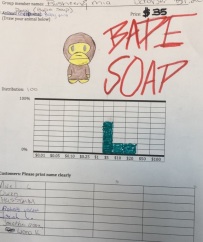
I would like to have the students complete some sort of analysis which would make the relationship between the price, the distribution and expected value more concrete. Maybe expand the Money Animal Mart idea, give them Monopoly money to shop with, and find a way to calculate everyone’s profit as a designer, and winnings as a shopper? I’m looking forward to running this activity again with further refinement – because if I can get the students up, moving and this interested, there’s definitely a bigger future for this.
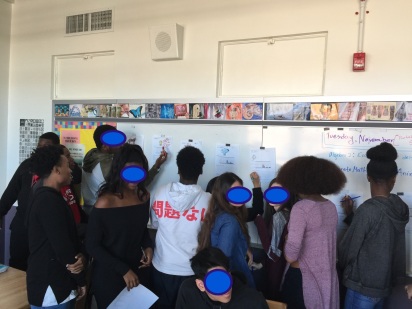
By the way, Happy Halloween!
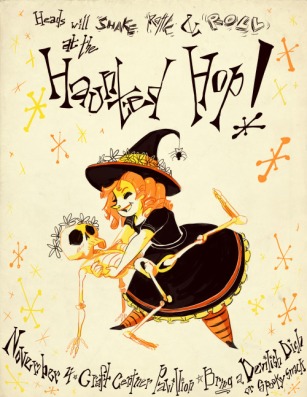
geobarnett.com


